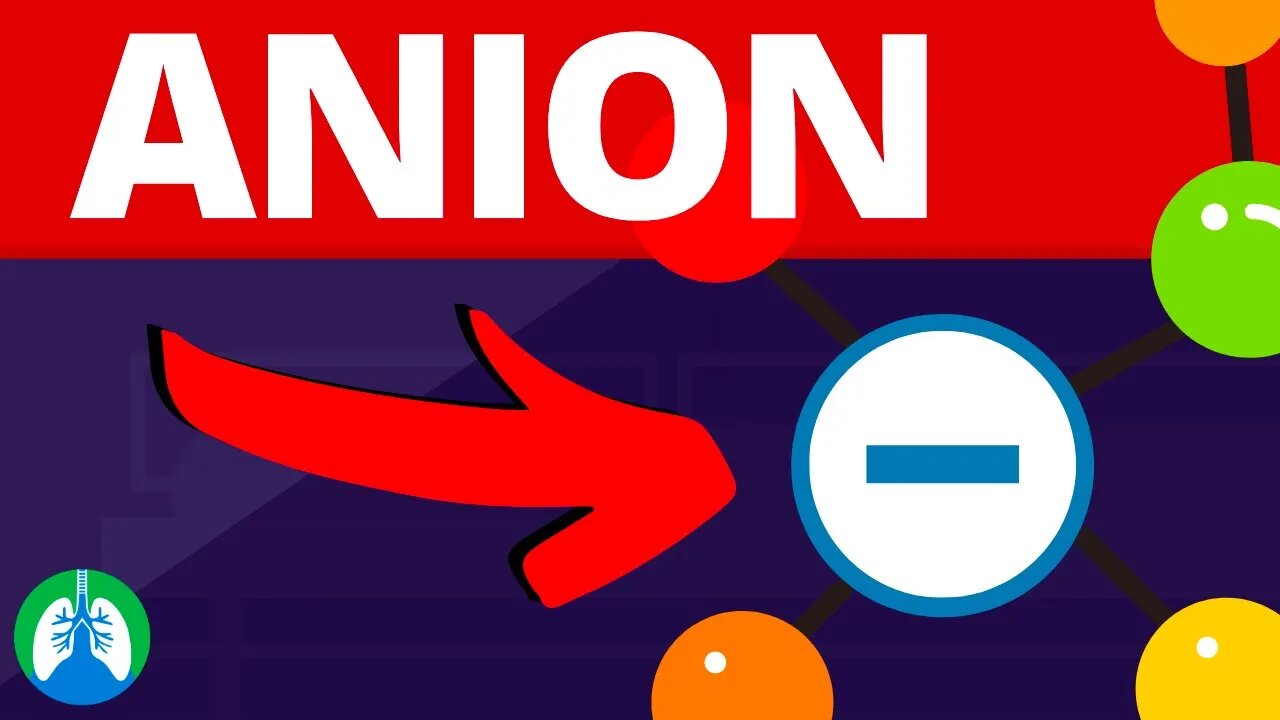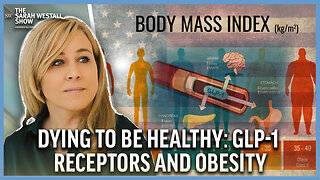Premium Only Content

Anion (Medical Definition) | Quick Explainer Video
What is an Anion? This video covers the medical definition and provides a brief overview of this topic.
💥Respiratory Therapy Definitions [Glossary] ➜ ➜ ➜ https://bit.ly/3g6s4Pj
➡️ Ion Definition
If an atom has an unbalanced number of electrons, it becomes charged and is known as an ion. Ions can have either a positive or negative charge. An ion that has more protons than electrons has a positive charge and is known as a cation.
➡️ Anion Definition
An anion has more electrons than protons which makes it negatively charged, and this is the ion that we're focusing on in this video. In order for an anion to form, one or more electrons must be gained. And for this to happen, it typically means that they have been pulled away from other atoms with a weaker affinity. The number of electrons gained indicates the charge of the ion and is shown after the chemical symbol.
➡️ For example:
If oxygen were to gain two electrons, then it would be shown as O2-. It's actually possible to predict whether an atom will form an anion or cation by looking at its position on the periodic table.
➡️ For example:
Halogens always form anions whereas alkali and alkaline earth metals always form cations. Most nonmetals such as carbon, oxygen, and sulfur form anions. Most metals such as silver, iron, and nickel typically form cations. Some elements are able to form both anions and cations under certain conditions. An example of this is hydrogen which can gain an electron to become (H-) or lose an electron to become (H+). The elements that are located in group 18 of the periodic table are known as noble gases. They typically do not form ions because their arrangement of electrons makes them unreactive.
💥Respiratory Therapy Definitions [Glossary] ➜ ➜ ➜ https://bit.ly/3g6s4Pj
—————
📗 BEST STUDY GUIDES FOR YOU
▪ TMC Test Bank 👉 http://bit.ly/2IGeqSu
▪ Hacking the TMC Exam 👉 http://bit.ly/2XBc8do
▪ TMC Exam Bundle (Save $) 👉 https://bit.ly/34pqEsV
▪ Daily TMC Practice Questions 👉 http://bit.ly/2NnXh3C
💙MORE FROM RTZ
▪ Free TMC Practice Exam 👉 http://bit.ly/2XlwASL
▪ Free RRT Cheat Sheet 👉 http://bit.ly/2IbmOKB
▪ Resources for RT's 👉 http://bit.ly/2WVV5qo
▪ Testimonials 👉 http://bit.ly/2x7b5Gl
🌐FOLLOW US
▪ Instagram 👉 http://bit.ly/2FhF0jV
▪ Twitter 👉 http://bit.ly/2ZsS6T1
▪ Facebook 👉 http://bit.ly/2MSEejt
▪ Pinterest 👉 http://bit.ly/2ZwVLPw
🚑MEDICAL DISCLAIMER
This content is for educational and informational purposes only. It is not intended to be a substitute for professional medical advice, diagnosis, or treatment. Please consult with a physician with any questions that you may have regarding a medical condition. Never disregard professional medical advice or delay in seeking it because of something you watch in this video. We strive for 100% accuracy, but errors may occur, and medications, protocols, and treatment methods may change over time.
💡AFFILIATE DISCLAIMER
This description contains affiliate links. If you decide to purchase a product through one of them, we receive a small commission at no cost to you.
—————
⏰TIMESTAMPS
0:00 - Intro
0:29 - Ion Definition
0:42 - Anion Definition
1:12 - O2 Example
1:31 - Halogen Example
—————
🖼CREDIT FOR MUSIC AND GRAPHICS:
▪ Music licensed from Audiojungle.net/
▪ Graphics: Canva.com, Freevector.com, Vecteezy.com, and Pngtree.com
#Anion #Cation #Ion
-
 3:17
3:17
Respiratory Therapy Zone
1 year agoWhat is Silicosis? (EXPLAINED) 🫁
417 -
 1:05:19
1:05:19
Sarah Westall
5 hours agoDying to Be Thin: Ozempic & Obesity, Shedding Massive Weight Safely Using GLP-1 Receptors, Dr. Kazer
28K9 -
 54:38
54:38
LFA TV
1 day agoThe Resistance Is Gone | Trumpet Daily 12.26.24 7PM EST
22.6K3 -
 58:14
58:14
theDaily302
14 hours agoThe Daily 302- Tim Ballard
30.1K1 -
 13:22
13:22
Stephen Gardner
7 hours ago🔥You'll NEVER Believe what Trump wants NOW!!
80.4K213 -
 54:56
54:56
Digital Social Hour
1 day ago $8.77 earnedDOGE, Deep State, Drones & Charlie Kirk | Donald Trump Jr.
42K4 -
 DVR
DVR
The Trish Regan Show
9 hours agoTrump‘s FCC Targets Disney CEO Bob Iger Over ABC News Alleged Misconduct
48.7K34 -
 1:48:19
1:48:19
The Quartering
9 hours agoElon Calls White People Dumb, Vivek Calls American's Lazy & Why Modern Christmas Movies Suck!
131K104 -
 2:08:42
2:08:42
The Dilley Show
10 hours ago $34.34 earnedH1B Visa Debate, Culture and More! w/Author Brenden Dilley 12/26/2024
115K25 -
 4:55:59
4:55:59
LumpyPotatoX2
13 hours agoThirsty Thursday on BOX Day - #RumbleGaming
109K5